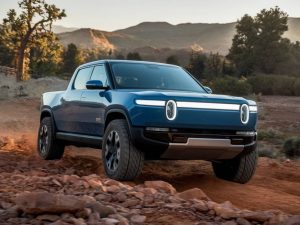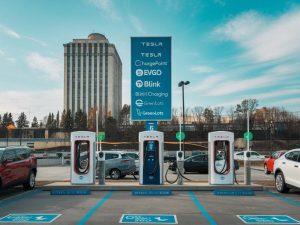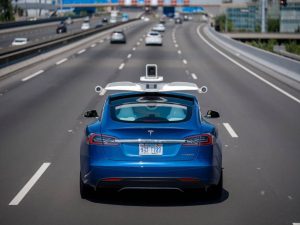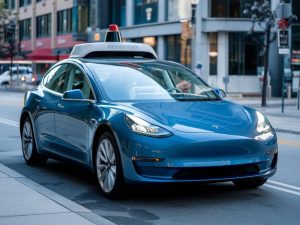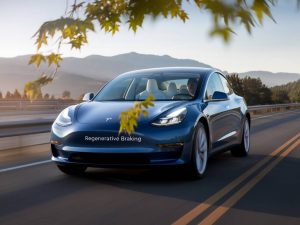Understanding the differences between ac and dc fast charging
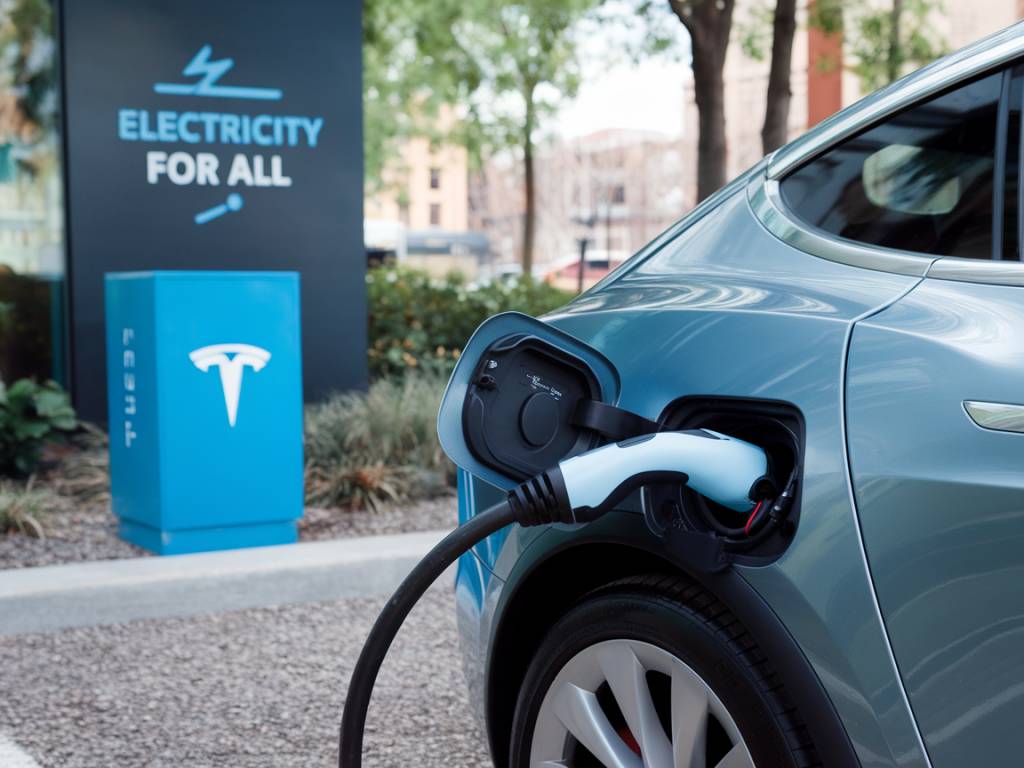
understanding the differences between ac and dc fast charging
Electric vehicles (EVs) are becoming increasingly popular as consumers look for more sustainable and eco-friendly transportation options. One of the essential aspects of owning an EV is understanding how to charge it. There are two primary methods for fast-charging electric vehicles: Alternating Current (AC) and Direct Current (DC) fast charging. In this article, we’ll dive deep into the differences between AC and DC fast charging, their advantages and disadvantages, and what it means for EV owners.
What is AC Fast Charging?
AC fast charging, often referred to as Level 2 charging in the United States, uses alternating current to charge an EV’s battery. This type of charging typically requires a dedicated charging station and a higher power outlet compared to standard home outlets. Most residential EV chargers are Level 2 AC chargers.
Batteries in electric vehicles store energy as DC, which means that the AC power from the charger must be converted to DC before it can be stored in the battery. This conversion is done by an on-board charger in the EV, a piece of hardware responsible for transforming AC into DC. The efficiency of this conversion process can impact the overall charging speed and energy loss.
AC fast charging tends to be slower than DC fast charging because it relies on the car’s on-board charger for the AC to DC conversion, which typically has a lower capacity compared to the high power used in DC fast charging stations.
What is DC Fast Charging?
DC fast charging, also known as Level 3 charging, uses direct current to charge an EV’s battery directly, bypassing the vehicle’s on-board charger. Because the conversion from AC to DC is handled by the charging station itself, DC charging can deliver power to the battery much more rapidly.
DC fast charging stations are typically found at commercial locations or along highways for quick recharging during long trips. These stations can provide very high power levels, often ranging from 50 kW to 350 kW or more, allowing for significantly faster charge times compared to AC charging.
However, not all electric vehicles are equipped to handle the highest levels of DC fast charging. The maximum charging speed of an EV is determined by the vehicle’s battery management system and the car’s design specifications.
Key Differences Between AC and DC Fast Charging
Here are some of the primary differences between AC and DC fast charging:
- Charging Speed: DC fast charging is significantly quicker than AC fast charging. While Level 2 chargers can take several hours to fully charge an EV, DC fast chargers can replenish a battery to 80% in as little as 20-30 minutes.
- Charging Equipment: AC charging utilizes the car’s on-board charger to convert the electricity, while DC charging equipment performs this conversion before it reaches the vehicle.
- Location and Accessibility: AC fast chargers are more commonly found at homes and workplaces, whereas DC fast chargers are typically located at public charging stations, such as along highways and in commercial areas.
- Cost: Due to the advanced technology and infrastructure required, DC fast charging stations are generally more expensive to use than AC charging stations. However, the convenience and speed often justify the higher cost for many users.
- Impact on Battery Health: Frequent use of DC fast charging can lead to faster battery degradation compared to AC charging. EV manufacturers usually recommend balancing the use of both types of charging to maintain battery health over the long term.
Advantages of AC Fast Charging
AC fast charging offers several benefits, particularly for everyday use and home charging:
- Cost-Effective Installation: Level 2 AC chargers can be relatively affordable to install at home, making them accessible for a wide range of EV owners.
- Availability: AC charging stations are abundant, making it easy to find a place to charge your vehicle.
- Battery Health: Slower charging is less stressful on the battery, which helps extend its lifespan and maintain its efficiency.
- Compatibility: Most electric vehicles are compatible with Level 2 chargers, offering flexibility in charging options.
Advantages of DC Fast Charging
DC fast charging is invaluable for those who need a quick charge or are on long road trips:
- Speed: The most significant advantage of DC fast charging is its ability to provide a substantial charge in a short amount of time.
- Long-Distance Travel: DC fast chargers are strategically placed along highways and in high-traffic areas to facilitate long-distance travel for EV owners.
- Convenience: The rapid recharge time reduces the need for prolonged stops, making it a convenient option for those with busy schedules.
When to Use AC Fast Charging
AC fast charging is best suited for scenarios where charging speed is not the highest priority:
- Home Charging: For most EV owners, Level 2 AC fast charging at home is the primary method for overnight charging, providing a full charge by the morning.
- Workplace Charging: Businesses and offices may install AC fast chargers to allow employees to charge their vehicles during work hours.
- Public Charging: Many public charging stations offer Level 2 AC charging as a slower but more readily available option.
- Battery Management: Using AC fast charging regularly can help preserve battery health by reducing the frequency of high-stress, rapid charging.
When to Use DC Fast Charging
On the other hand, DC fast charging is ideal for specific situations requiring speed and convenience:
- Long Trips: When traveling long distances, DC fast chargers along major routes can help minimize downtime for recharging.
- Urgency: If you need to quickly charge your EV to continue your journey or get to your next appointment, DC fast charging is the best option.
- Commercial Use: Fleet vehicles, taxis, and rideshare services benefit from the rapid charging capabilities of DC fast chargers to maximize uptime and efficiency.
Technological Advancements in Charging
The EV charging landscape is continually evolving, with advancements aimed at improving both AC and DC fast charging:
- Increased Power Levels: Newer DC fast charging stations are capable of delivering power levels above 350 kW, further reducing charge times.
- Bi-directional Charging: Upcoming AC chargers are expected to support bi-directional charging, allowing EVs to return power to the grid or a home during peak times.
- Wireless Charging: Research is ongoing into wireless charging technologies, which could make the charging process more seamless and convenient in the future.
- Improved Battery Management Systems: Advanced battery management systems in new EV models are optimizing charging protocols to balance speed and battery longevity.
Choosing the Right Charging Solution
Ultimately, the choice between AC and DC fast charging will depend on your specific needs and circumstances:
- Daily Use: For regular daily charging, implementing a Level 2 AC charger at home is a practical and cost-effective solution.
- Road Trips: For long-distance travel or situations requiring a quick top-up, access to DC fast chargers is crucial.
- Budget: Consider the installation costs, electricity rates, and potential usage fees associated with both types of charging infrastructure.
- Vehicle Compatibility: Ensure your EV is compatible with the charging solutions available and can handle the power levels offered by DC fast chargers.
By understanding the differences between AC and DC fast charging, EV owners can make informed decisions about their charging strategies, ensuring convenience, efficiency, and the longevity of their vehicle’s battery. Whether you’re primarily charging at home or on the go, having a comprehensive charging plan is essential to maximizing the benefits of owning an electric vehicle.

